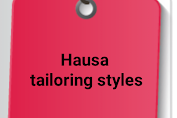Fashion design is the art of creating clothing and accessories that are aesthetically pleasing and functional. The fashion industry is a vast and diverse industry that includes designers, manufacturers, wholesalers, retailers, and consumers. It is an industry that constantly evolves and changes with the times, influenced by various factors such as culture, politics, technology, and social trends. In this blog post, we will explore the world of fashion design, focusing on the alluring Arewa styles that define the art of clothing creation.
 |
| What is fashion design |
The Origins of Fashion Design
The origins of fashion design can be traced back to ancient civilizations, where clothing was used not only for practical purposes but also as a symbol of social status and identity. In ancient Egypt, for example, clothing was used to distinguish between social classes and professions, with the pharaohs and nobles wearing elaborate and ornate garments made from fine materials like linen and silk, while the commoners wore simpler garments made from wool or cotton.
During the Renaissance era in Europe, fashion design began to take on a more artistic and creative form, with designers using new techniques and materials to create elaborate and intricate garments. The rise of haute couture in the 19th century marked a turning point in the fashion industry, with designers like Charles Frederick Worth and Paul Poiret establishing themselves as trendsetters and innovators in the field.
The Elements of Fashion Design
Fashion design is a multifaceted discipline that incorporates various elements such as color, texture, silhouette, and fabric. These elements work together to create a cohesive and harmonious design that is both aesthetically pleasing and functional.
Color
Color is one of the most important elements of fashion design, as it can convey mood, emotion, and personality. Designers use color to create contrast, balance, and harmony in their designs, and to evoke certain feelings or associations in the viewer. For example, bright and bold colors like red and yellow are often associated with energy and excitement, while softer and more muted colors like pastels and earth tones are associated with calmness and serenity.
Texture
Texture is another important element of fashion design, as it can add depth, dimension, and interest to a garment. Designers use different textures and materials to create contrast and tactile interest, and to enhance the overall look and feel of a garment. For example, a garment made from a smooth and silky fabric like satin will have a different texture and feel than a garment made from a ro
ugh and textured fabric like tweed.
Silhouette
Silhouette refers to the overall shape and form of a garment, and is another important element of fashion design. Designers use silhouette to create visual interest and balance, and to emphasize certain parts of the body. Silhouette can be influenced by various factors such as the style of the garment, the fabric used, and the cultural and social context in which it is worn.
Fabric
Fabric is the material used to create a garment, and is perhaps the most important element of fashion design. The choice of fabric can affect the way a garment looks, feels, and drapes, and can also influence its durability and functionality. Designers use a wide range of fabrics in their designs, including natural fibers like cotton, silk, and wool, as well as synthetic fibers like polyester and nylon.
The Arewa Style
 |
| Arewa Styles |
The Arewa is a term used to describe the northern region of Nigeria, which is known for its rich cultural heritage and diverse traditional clothing styles. Arewa fashion design is a unique and distinctive style that incorporates traditional elements with modern designs, creating a fusion of old and new. One of the most prominent features of Arewa fashion design is the use of vibrant and bold colors, such as red, yellow, and green. These colors are often used in combination with intricate patterns and embroidery, which are inspired by the region's cultural traditions and history.
Another defining feature of Arewa fashion design is the use of flowing and loose-fitting garments, which are designed to be comfortable and functional in the hot and humid climate of the region. These garments include the boubou, a loose-fitting robe-like garment, and the kaftan, a flowing tunic-like garment that is often worn with a matching cap called a fula. One of the most notable designers in the Arewa fashion industry is Hafsah Mohammed, who is the founder of El-Magnifico Couture. Mohammed is known for her innovative and modern take on Arewa fashion, incorporating traditional elements with contemporary designs to create unique and stylish garments. In addition to creating beautiful garments, Arewa fashion designers also play an important role in preserving and promoting the region's cultural heritage.
By incorporating traditional elements into their designs, they help to keep traditional clothing styles alive and relevant, while also introducing them to a wider audience. The Arewa fashion industry has also been impacted by the COVID-19 pandemic, which has led to a decline in demand for luxury goods and a shift towards more casual and comfortable clothing styles. Many designers have adapted to this new reality by creating more practical and functional garments that are suited to the current climate. In conclusion, fashion design is a complex and ever-evolving art form that incorporates various elements to create beautiful and functional clothing and accessories. The Arewa style is a unique and distinctive fashion style that draws inspiration from the rich cultural traditions of northern Nigeria, creating a fusion of old and new. With talented designers like Hafsah Mohammed leading the way, the Arewa fashion industry is sure to continue thriving for years to come.































Post a Comment